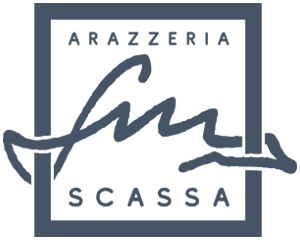Collaborations
Collaborating with artists is one of the most important and interesting pages of our history that extends more than half a century. Since its foundation in the late 1950s, Arazzeria Scassa has always worked closely with numerous artists, in an attempt to create the perfect synthesis between the various arts, uniting the painter or cartonnier on the same level and in the same place, together with the tapestry atelier to test each other’s interpretative skills and technical expertise.
It is quite common for tapestries to arise from this union, from this virtuous exchange of knowledge and creative spirit.
Ugo Scassa first and Massimo Bilotta in more recent years have accompanied the artist, sharing ideas and possibilities. This was made possible because the technique of weaving utilised and perfected by Ugo Scassa permits the realisation of tapestries even whereby not exclusively derived from specially-designed preparatory sketches, but hailing from paintings and other artworks, even from textured modern art of various natures, made with the sole purpose of “creating” art. Hence, there are no limits to the infinite possibilities that Scassa looms have faced and are ready to face in the future.
The chromatic markings, the broad and full brush strokes often superimposed by the pictorial impulse, the casting of colours – all these aspects necessitate a specific yield from the weaving. Indeed, the texture of much of modern and contemporary art poses one of the biggest problems, almost a challenge, which the Arazzeria in Asti has faced since its début. So, what can be done? How can wool fibre be used to give body to all of this, how can the expressive strength of such special abstract works of the likes of Cagli, Santomaso, Corpora or Vedova be rendered?
The modifications that Ugo Scassa made to the ancient processes from centuries past have allowed the idea of tapestry to be expanded and diversified.
“I work according to concepts that are very different to those of the French. As for the quality of the cartoon, my choices are oriented towards the works of the most talented and established contemporary artists rather than – as does the corporation of the peintres cartonniers – towards their cartoons. Instead of forcing artists to make cartoons expressly for weaving a tapestry – at the risk of generating all the limitations that cartonniers impose on their pictorial language – I think it is more beneficial to choose from amongst their works those that I consider the most suitable for use as tapestry cartons, precisely because they are more adherent to the technical means with which they will be expressed".
Ugo Scassa
Thus, Arazzeria Scassa has its own school of thought, to which it adheres and of which the new generation of tapestry ateliers is heir. The choice of the work may not necessarily fall within a narrow range of drawings but extends, free to evaluate the taste, nuances, the meanings of the work, its artistic sum. Together with the tapestry artisan, even today, it is possible to evaluate which expressive language can be best expressed in woven form.
For example, watercolours also come into play, with tonal passages whose nuances reach a complexity such as to require a careful study of the colouristic components. If contemporary painting is expressed through the most diverse stylistic innovations, it is necessary – and so shall be done when the time comes – to adopt a technique able to transfer to tapestry all of those elements suggested by the artist’s work and which contribute to rendering the tapestry a work of art.



